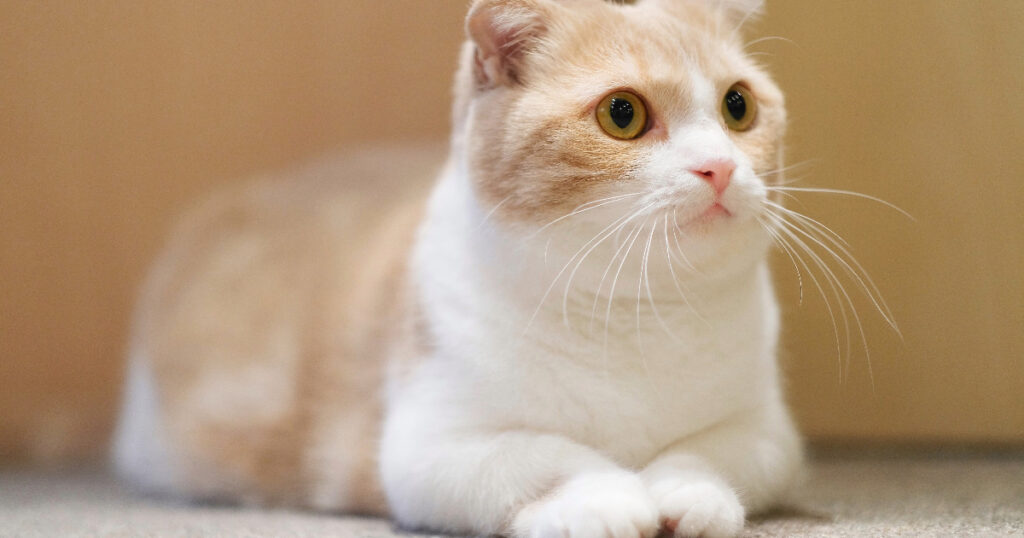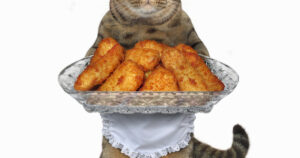Cats come in all shapes and sizes, but some breeds stand out for their adorably shortened legs. These genetic mutations continue fascinating cat lovers.

Let’s explore the origins, traits, and care of the most popular short leg cat breeds. Whether long-haired, short-haired, or hairless, these mini-kitties charm many with their puppy-like features.
Munchkin – The Original Short Leg Cat

The short-legged Munchkin cat traces its roots back to a stray found hiding under a car in Louisiana in the 1980s. The breed resulted from a dominant genetic mutation affecting bone growth.
Despite their short stature ranging from 5-9 inches, Munchkins have a full-sized flexible body and head. Their hind legs are slightly longer than the fronts. The breed comes in long and short coat varieties and all colors and patterns.
Munchkin cats weigh 4-9 pounds but are surprisingly agile, able to run, climb, and jump despite their short legs. Research shows no higher incidence of spinal or joint problems compared to other breeds.
These cats have outgoing, playful personalities and live 12-15 years on average. Their friendly nature makes them great family pets. Some owners describe them as “ferret-like” in their energy and love of chasing toys.
Lambkin – The Furry Short Leg

This long-haired breed combines the genes of Munchkin and Selkirk Rex cats. The resulting Lambkins have a fluffy coat reminiscent of a lamb’s fleece.
Ranging from 4-9 pounds, Lambkins have a stocky build on short legs but a long plumed tail. They come in many colors and patterns.
Lambkins have calm, gentle dispositions making them ideal pets for families with children. They crave attention and enjoy being held and cuddled.
While this loving breed typically lives 12-15 years, some Lambkins inherit skeletal issues from Munchkin lineage. Careful selection of healthy breeding stock minimizes problems.
Skookum – The Playful Short Leg

Skookums bring together the genes of Munchkin and curly-coated LaPerm breeds. These active, people-oriented cats have plumed pompom tails.
Their soft curly coats come in many colors and range from short to long. White Skookums frequently have striking odd-colored eyes.
Living 10-15 years, the intelligent Skookum makes a wonderful family pet. This breed loves playing games and learns tricks easily.
Skookums enjoy climbing and jumping, surprising many people expecting them to have limitations due to their short legs. Weekly brushing keeps their skin and coat healthy.
Kinkalow – The Curly Eared Short Leg

This rare short-legged breed combines the genes of Munchkin and upright-eared American Curl cats. Most Kinkalows have straight ears at birth with their signature curls developing later.
Their bodies are small but muscular, ranging from 3-7 pounds as adults. Kinkalows live 10-15 years typically.
While mischievous and active, Kinkalows form close bonds with their owners. They often follow people from room to room much like loyal dogs.
Weekly grooming keeps their coat in good condition. Careful selection of healthy lineages minimizes the bone and joint abnormalities sometimes seen in short leg breeds.
Dwelf – The Elfish Short Leg

This nearly hairless breed brings together Sphynx, Munchkin, and American Curl genetics. The combination of curled ears and short legs gives Dwelfs an elfish appearance.
Ranging from 1.5-3 pounds, Dwelfs feel velvety soft to the touch. Lacking fur, they thrive in warm environments and benefit from sweaters in cold weather.
Dwelfs have dog-like personalities, actively seeking out human companionship. Despite their small size, they remain playful and energetic into adulthood. Expect mild mischief!
While increasingly popular, some question the ethics of breeding hairless, short-legged cats. Careful selection for health minimizes spinal issues that can occur in this breed.
Minskin – The Hairless Short Leg

This nearly bald breed combines hairless Sphynx with short-legged Munchkin genes along with Burmese and Devon Rex influence. The result is a tiny, hairless cat with a kitten-like appearance its entire life.
Minskins have large eyes and prominent ears. Sparse fuzz may cover parts of their bodies. They come in a variety of patterns and colors.
Though small at 5-9 pounds, the affectionate Minskin has a huge personality. They form strong bonds with their owners and make ideal pets for singles, couples and families with older children.
Regular bathing and protection from temperature extremes is essential for their health and long lifespan of 12-15 years.
Minuet – The Persian Short Leg

This breed, sometimes called the Napoleon, brings together Persian and Munchkin genetics. Short legs combined with the Persian’s sweet expression and long flowing coat make an adorable package.
Ranging from 2.5-4 pounds, Minuets have round faces with large eyes and short muzzles. Their plush coats come in many colors and patterns.
The laidback Minuet takes life at an easy pace. This affectionate breed likes to follow their special person around the house. They love snuggling in laps.
With proper care and regular veterinary checkups, Minuets typically live 9-15 years. Their most common health issue stems from Persian kidney genetics.
Genetta – The Leopard Short Leg

This spotted, short-legged breed combines the genes of Bengals, Savannah, and Munchkin cats. The result resembles a mini leopard or ocelot.
Athletic Genettas have long bodies and short legs. Weight ranges from 4-8 pounds. Their coats feature vivid spotted or marbled patterns.
Living 9-12 years, Genettas have dog-like personalities. They actively seek out human interaction and accompany their owners in daily activities.
Highly intelligent, Genettas easily learn tricks. They play fetch and chase balls like sporting dogs. Despite their wild appearance, they enjoy snuggling with their special people.
American Curl – The Curly-Eared Short Leg

This breed originated from two strays with unique curled ears found in California in the 1980s. American Curls now come in long and short coat varieties.
American Curls have rounded heads and medium-length bodies with strong legs and paws. Their ears curl tightly backward lending an owlish appearance.
Known for affectionate and social personalities, American Curls make ideal family pets and get along well with children and other animals.
Weighing 5-10 pounds, the healthy American Curl typically lives 9-13 years. Regular grooming and veterinary care help minimize health issues.
FAQ
What health issues do short legged cats have?
Some short legged cats can develop lordosis (curved spines), patellar luxation (dislocated kneecaps), and painful osteoarthritis. Responsible breeders screen for joint and spine problems. Providing excellent nutrition and limiting jumps from heights minimizes issues. Annual vet checkups help monitor bone health.
How did short legged cats originate?
The first known short legged cats emerged randomly as natural genetic mutations. The Munchkin breed standardized the short leg trait starting in the 1980s. Crossbreeding Munchkins with other pedigreed breeds led to new short leg varieties.
Do Munchkins cats live a normal lifespan?
Yes, responsible breeders report Munchkin cats have typical 12-15 year lifespans. Research has not shown higher rates of health issues compared to other breeds. Proper nutrition and exercise allow Munchkins to thrive into old age.
Can short legged cats climb and jump?
While unable to jump as high as longer legged cats, most short legged breeds can readily climb, jump, and run. Their bodies and musculature develop normally. Owners are often amazed at their agility and speed despite their short legs.
Conclusion
Short legged felines continue fascinating cat lovers with their cute expressions and range of coat types. Careful selection for health allows responsible breeders to minimize problems and produce kittens likely to live normal lifespans. These devoted, outgoing furry friends bring years of joy to the families who welcome them into their homes.








